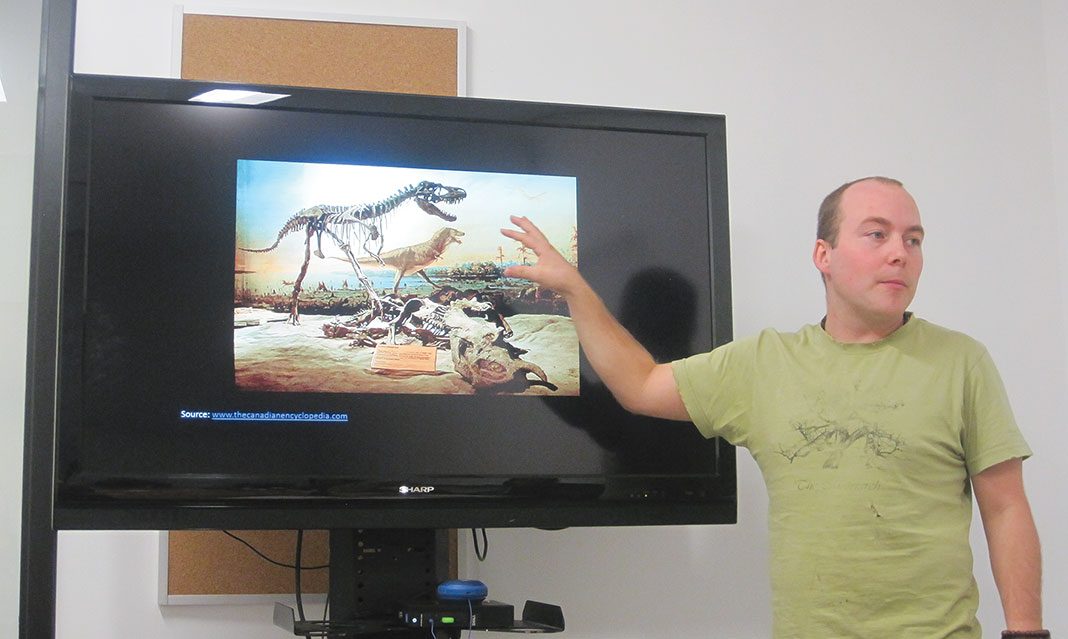Last Wednesday, third-year Ph.D. student Anthony Scott started off the Department of History’s Prandium Lunch series for the year, with a talk on the colonial aspects of dinosaur discovery in Canada—or what Scott likes to call, “the Canadian origin myths”.
In this seminar, Scott focused on the badlands of Alberta, where the skull of the Albertosaurus was found by geologist Joseph Burr Tyrrell in 1884. The skull was the first dinosaur fossil to be discovered in Canada.
An important part of these badlands, that most historians and museum displays will fail to mention, is how these fossils were reported to be items of religious veneration by the First Nations people (such as the Blackfoot, Sarcee, and Peigan tribes), as they contributed to the material and religious well-being of the land. When we see these dinosaur fossils in museums, they are often stripped of all traces of their cultural, religious, or geographical contexts. What is offered to us instead are scientific samples in front of white backgrounds. Scott describes this as an act of erasure of the “epistemic aesthetic” of these fossils.
When European settlers came into the reservations in the badlands with the pretext of being interested in the agro-industrial aspect of the area, they soon displaced the First Nations people off their land and committed “geological genocide” in the form of resource extraction, such as coal-mining and deforestation.
At the heart of Scott’s research was a daring contestation that maybe Tyrrell, the celebrated founding father of dinosaurs in Canada, was not the first one to have found Albertosaurus’ skull after all.
Scott provides the explanation that Tyrrell was accompanied by two Christian, First Nations travel guides during his geological survey. In fact, they were the ones to have picked the trail for excavation for him.
Scott also mentioned that objectively-speaking, Tyrrell was a horrible excavator, and botched the entire expedition; he rushed through the job and excavated the fossil terribly. One reason for Tyrell’s lack of excavation skills, according to Scott, was that paleontology as a scientific field had not been established yet, so Tyrrell was poorly trained in carrying out excavations. The second more controversial reason was that Tyrrell rushed through the task because he was aware that he was in some place where he wasn’t meant to be—the site where the fossilized skull was found was actually a religious site for the First Nations individuals living in that area, and might have been filled with various religious paraphernalia.
At the end, Scott sided with the idea of “hypothetical iconoclasm”, where Tyrrell might have desecrated a sacred site. No evidence for such a claim has been found yet, but it’s rash to completely disregard this postulation, as Scott isn’t the first person to criticize Tyrrell’s role in the history of dinosaur discovery.
It is unfortunate to realize how much of the history of dinosaurs has been romanticized in Canada, as it most certainly has been in the United States as well. According to Scott, “The excavation of the fossils served to legitimize the Canadian manifest destiny,” where the colonialists rushed into others’ lands to excavate in pursuit of new scientific knowledge that they could collect.
In the end, Scott provided an alternative narrative to dinosaur discovery in Canada. He states that “problematizing the roles of the founding figures in history[…]causes the dinosaurs to appear in a new light as the epitome of imperialism.”



